Science Fiction and Fantasy New Releases: 2 December 2023
Saturday , 2, December 2023 Uncategorized Leave a commentEvery week, the Castalia House Blog spotlights some of the many new releases in independent, pulp, and web novel-influenced science fiction and fantasy.
A laugh-out-loud, slice-of-life martial-arts fantasy about . . . farming????
Jin Rou wanted to be a cultivator. A man powerful enough to defy the heavens. A master of martial arts. A lord of spiritual power. Unfortunately for him, he died, and now I’m stuck in his body.
As Jin, I’m a man of the earth. A wielder of shovels and lord of rice and wheat. And sure, I also had to die and get pulled into another universe to end up here. But guess what? I’m starting to think it was worth it.
I’ve somehow managed to get away from it all. Finally free of the bloodshed of cultivator fights, I figure I’ll live in the slow lane from here on out, my only real concern the rain—or lack thereof.
Unfortunately, I’ve suddenly got a shady organization looking for me, my cat has gone off to fight in a martial arts tournament, and my chicken has uncovered an ancient crystal containing portents of doom. You know, the usual stuff.
I’m not worried though. Sometimes trouble finds you. And while I may not be a master cultivator . . . trouble should know better than to mess with a farmer.
For more than a century readers have been entranced by Edgar Rice Burroughs’ arid red planet of Barsoom, with its valiant city states and hordes of four-armed green Martians inhabiting the dead sea bottoms, all pitted against one another in a deadly fight for survival. But what was ancient Barsoom like in its prime, before the oceans evaporated and its proud peoples were forced to construct an atmosphere factory to keep themselves alive on a dying world? Find out the answer in Dark Tides of Mars: A Novel of Barsoom by Chris L Adams, the newest volume in the Wild Adventures of Edgar Rice Burroughs series!
Barsoom is dying, its atmosphere thinning with each passing year, the seas that once flourished upon its surface dried up eons ago. When warrior-scientist Dat Voga is asked to become Helium’s ambassador to distant cities that may provide a desperate chance at life for the people of Barsoom, he leaps at the opportunity. But even as this new hope dangles on a thread, a madman seeks to hasten the Red Planet’s doom-and Dat Voga is hurled headlong upon an odyssey across the chasm of Time itself!
With one shot to clear his name, space pilot Charles Farradyne is sent to infiltrate a galactic enterprise that deals in a salacious narcotic called Hellflower. An intoxicant that drives women mad with lust. A vintage sci-fi action romp from the planetary pulp pages of Startling Stories from the early 1940s.
George O. Smith is the author of “QRM Interplanetary” and the Venus Equilateral, a science fiction series that explored satellite communications and radio mysteries before Arthur C. Clarke popularized the concept.
You can run, but you can’t hide from U.S. Army Rangers
With the armies of the enemy smashed at the final battle for the desert port city, the Rangers return to their primary mission to do what they do best: eliminate a high-value target with extreme violence of action deep inside hostile territory.
Failure is not an option—even if that target is a ten-thousand-year-old undead sorcerer of incredible power surrounded by dark, deadly cabals and savage monsters of myth and fable that are all too real.
Raids, infiltration, and ambush—and whatever means are necessary—bring the relentless Rangers straight into direct conflict with the dark forces of the Valley of Kings and Priests, where Sût the Undying dreams horrible nightmares of dark magic in a fantastic pyramid more fortress than eternal tomb, intent on conquering the Ruin… and with one final terrible card to play.
It’s time to breach and clear for all the marbles in a high-stakes game of Hide and Go Kill.
Don’t Forget Nothin’. Read More
Sensor Sweep: Poe, William Hope Hodgson, Dire Wolves
Monday , 27, November 2023 Sensor Sweep Leave a comment
Paleontology (Science.org): Dire wolves, which died out with mammoths and saber-toothed cats at the end of the last ice age, were long thought to be close cousins of gray wolves. Now, the first analysis of dire wolf DNA finds they instead traveled a lonely evolutionary path: They are so different from other wolves, coyotes, and dogs that they don’t belong in the genus that includes these animals.
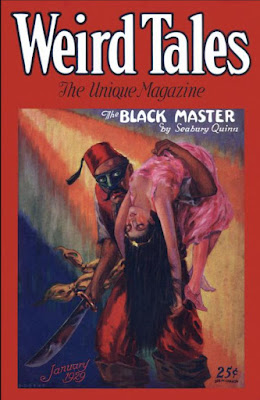
Robert E. Howard (Paperback Warrior): One of Robert E. Howard’s most iconic characters, along with Bran Mak Morn, Conan, and Kull, is Solomon Kane. The character’s first published appearance was in a short story called “Red Shadows”, which was published in the August, 1928 issue of Weird Tales. Mixing sword-and-sorcery and horror, Howard’s Solomon Kane stories feature a late 16th century Puritan who adventures around the world fighting evil.
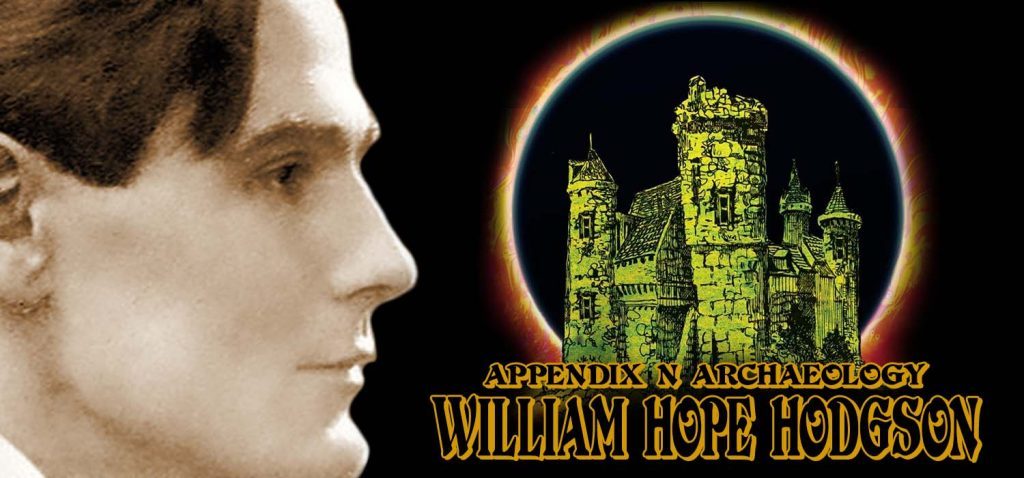
Horror (Goodman Games): We begin with a name that might not be familiar to all weird fiction fans but was certainly known by Gary Gygax—William Hope Hodgson. Hodgson was critically praised during his lifetime, but his works fell out of the public eye in the years following his death. Even today, Hodgson remains a peripheral figure to genre fans with few being familiar with his work.
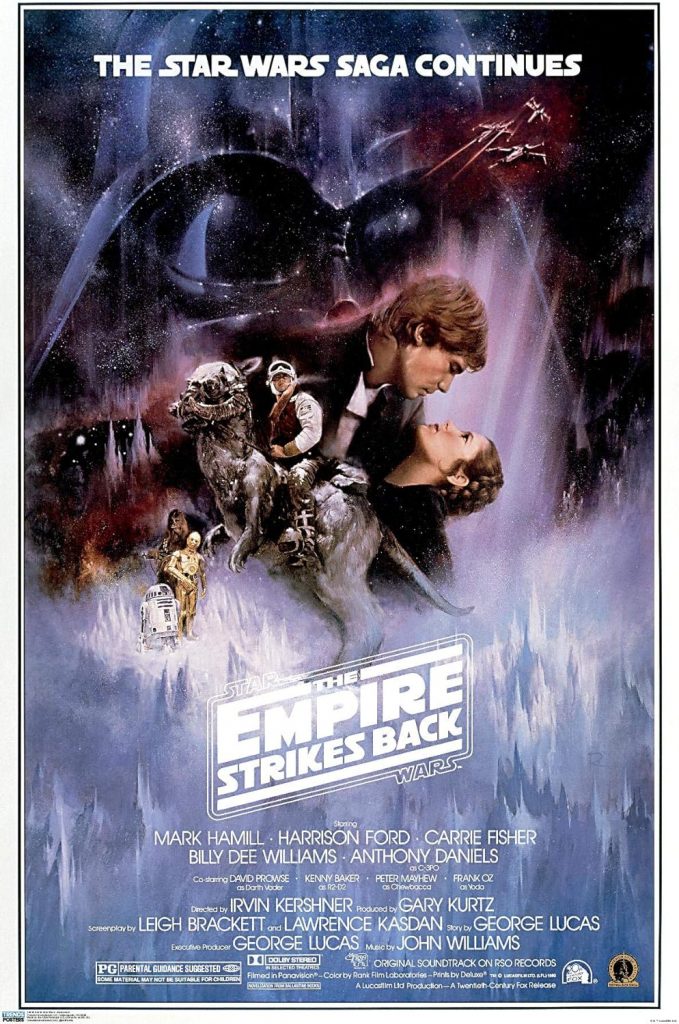
Art (Art of the Movies): Roger Karl Kastel was born in White Plains, New York on 11th June, 1931. Both parents painted and perhaps inevitably, their son developed a keen interest in art, picking up a pencil and paper whenever he could.
Fantasy Round Up (Tule Fog Press): Happy Thanksgiving! May God bless you and yours and may you have a fantastic holiday season beginning with this wonderful weekend of giving thanks to the Creator of all good things. Not sure what’s going on in this photo, but heh, whatever works! Carve away anyway you can, I suppose. (grin) Now on with the show!
Pulp (Pulp Pipe Poetry): Fans of pulp fiction gravitate to the heroic characters and whacky plots, not just in their original magazine form, but in other adaptations such as paperbacks, comic books, films, and radio plays. People read the pulps for their extravagant plots and exotic locales, but they stayed for larger-than-life characters, like The Shadow, The Spider, and Doc Savage.
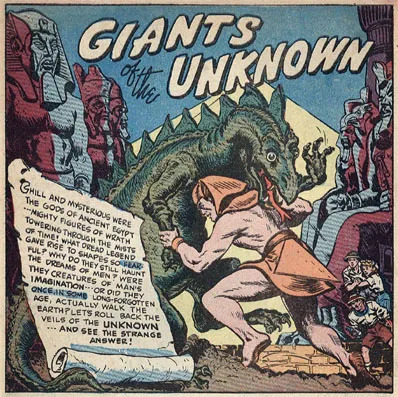
Comic Books (Dark Worlds Quarterly): In 1952, Frank Frazetta drew the first issue of Thun’Da King of the Congo, showing the right way to do comics about lost worlds. The editors foolishly wanted yet another jungle lord comic and put the kibash on the prehistoric stuff. Frank quit. His efforts have been honored by fans of that particularly mix of fantastic elements I call “Cavemen & Dinosaurs” but he wasn’t the only one using them in the Golden Age.
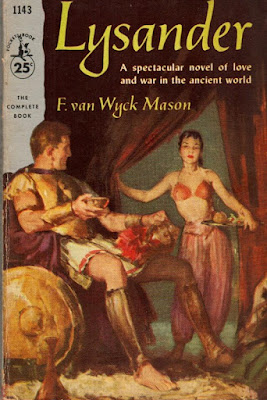
Fiction (Rough Edges): LYSANDER is a historical adventure novel by F. van Wyck Mason published as a paperback original by Pocket Books in 1957 with a cover by James Meese. That’s my copy in the scan. Mason was an old pulpster, of course, and this novel is an expansion of his serial “Lysander of Chios” serialized in ARGOSY in June and July of 1935.
D&D (DM David): In 1997 Wizards of the Coast bought Dungeons & Dragons publisher TSR, rescuing the company from bankruptcy. New D&D head Ryan Dancey looked for ways to turn the game into a healthy business. Dancey saw fan contributions as an enhancement to the D&D community that strengthened the game’s place in the market. Support from fans and from third-party publishers encouraged more people to play D&D. Dancey wrote, “This is a feedback cycle—the more effective the support is, the more people play D&D. The more people play D&D, the more effective the support is.”
D&D (Grognardia): Issue #81 (September/October 1977) of Campaign magazine is notable for its lengthy overview/review of Dungeons & Dragons, written by Len Kanterman (of Starships & Spacemen fame) and Charles Elsden. The entire article is worthy of extended examination – and I plan to do just that over the course of several upcoming posts – but I thought a section toward the end might elicit some commentary. Dubbed the “ten commandments of D&D,” they represent the authors’ advice to traditional wargamers playing the game for the first time.
Art (Dark Worlds Quarterly): What I do want to talk about is one of Burroughs’ best lion look-a-likes, the banth, the Barsoomian version of the lion. Ed described it for the first time in his second Martian novel, The Gods of Mars (All-Story, January-May 1913):
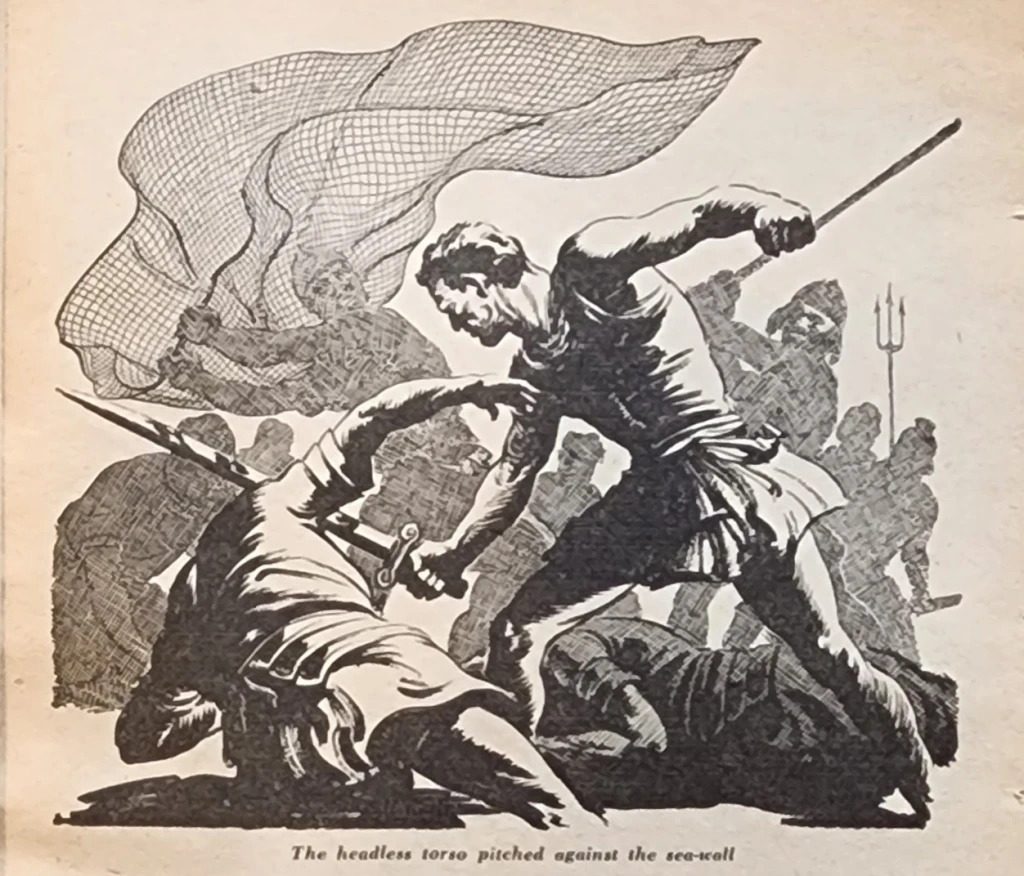
Pulp (Sprague de Camp Fan): Probably old news for most. Conan the Cimmerian appears in this story. But he is on Mars. The main character is Lee Thorsten. But he is in the body of Theseus. (The Greek hero who killed The Minotaur.) And Thorsten/Theseus is on Mars as well. So is the Minotaur! Let’s take a look at this convoluted “Conan” adventure.
Fiction (Auron MacIntyre): George Orwell’s “1984” is the most well-known dystopian novel, but its ubiquity has failed to prevent modern governments from marching toward totalitarianism. I discuss why Orwell’s warnings failed and point to other novels that serve as a more effective warnings against our current managerial regime.
Games (Wertzone): As part of N7 Day – an annual celebration of the franchise derived from the N7 special forces group in the video games – BioWare released a series of text and video bursts teasing a new clip. Once fans had done some detective work, the full clip was posted as above. The accompanying text (in the original files) suggests that the next game in the series takes place in or after the year 2819, the year that Mass Effect: Andromeda took place in.
Games (Bounding Into Comics): CD Projekt Red, the video game developer behind The Witcher franchise, announced they are developing a mod editor for The Witcher 3: Wild Hunt.
Tolkien (Notion Club Papers): Transcarnation may be a neologism: that is, a word here invented by Tolkien; which probably was intended to convey the idea of a soul transferring from one body to another without death.
Popular Culture (Aureus Press): Cultural narratives, such as mythology and shared history, are the genetic code of a society. This mythological DNA structure determines the shape of beliefs and modes of being of the people who live out the ideals of those myths. Throughout American culture right now, we are seeing an “overcoding” of cultural myths and popular media.
Literature (Liberty Fund): Milton refrained from writing further political prose and focused on composing his celebrated epic poem Paradise Lost (1667; revised twelve-book edition, 1674), which focuses on Satan’s rebellion against God the Father and his Son as well as the creation, fall, and anticipated redemption of Adam and Eve, concluding with the first couple’s expulsion from Eden.
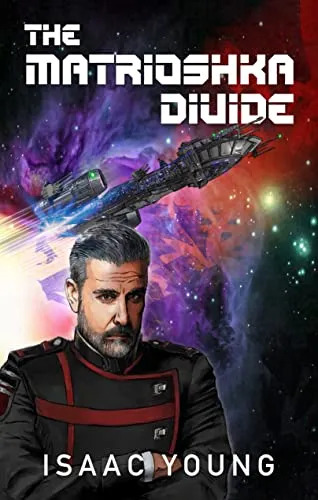
Review (Ruined Chapel): The Matrioshka Divide is a throwback to the Golden Age of science fiction, in the tradition of Heinlein and Asimov, where advanced spacefaring technology is used to explore political and philosophical ideas.
RPG (Monsters & Manuals): What defines a ‘bad’ monster? For me, it generally has at least one of these three qualities. First, it shatters verisimilitude by being either ‘jokey’ or just really hard to visualise or imagine. Second, it has some nuclear-grade special ability that can only really be avoided or circumvented by a successful saving throw rather than player intelligence. Third, it is just boring, usually because it is too much like a lot of other monsters, or because it has no obvious role beyond being a benevolent quest-dispenser or GMPC.
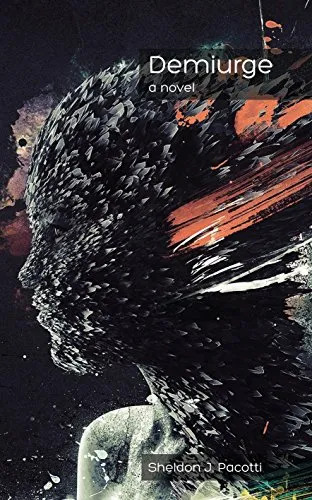
Review (Ruined Chapel): It’s set in the distant future, when everything can be copied; the matter rearranged. This includes human beings. It’s not at all unusual for a person to die, and a new copy to be “instantiated” from the data stored in some central insurance system. Cosmetic alterations of all sorts can be performed instantaneously and at will.

Science Fiction (Vintage Pop Fictions): Harry Harrison’s science fiction novel The Stainless Steel Rat was published in 1961, although it drew on two earlier novelettes, The Stainless Steel Rat (1957) and The Misplaced Battleship (1960), which had appeared in the pulp magazine Astounding. A sequel would appear in 1970, to be followed by another ten books in the series.
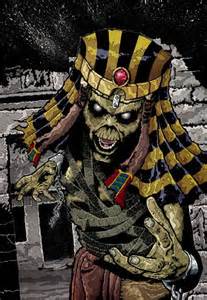
RPG (Fantasy Role Playing Planes): Mummies, and ghouls are common threats found in many types of RPG games. Unfortunately, it’s far too easy for the GM to roleplay them in a simplistic manner, as simple monsters to vanquish, giving them no backstory or interest, and an opportunity for world building is lost. But by giving them unique places to be, interesting attributes, and different causes of creation they can truly become the threats they should be.
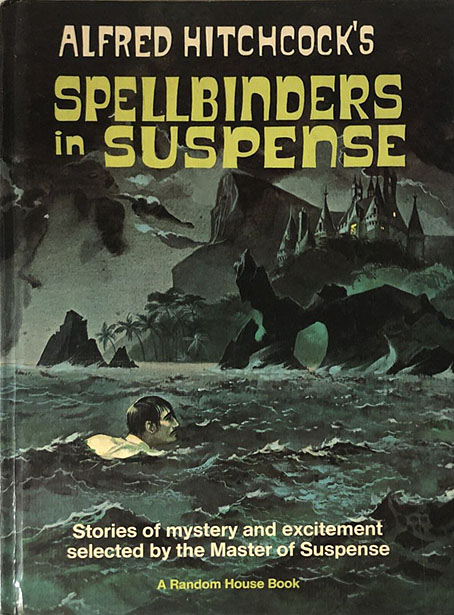
Anthologies (John Coult Hart): I watched Alfred Hitchcock’s The Birds again recently, after which I went looking for the contents list of the collection where I first read Daphne du Maurier’s story. The book in question, Alfred Hitchcock’s Spellbinders in Suspense, is one of the many anthologies that used the director’s name to lure potential purchasers, even though Hitchcock didn’t choose any of the stories and didn’t write any of the introductory notes or mini essays that these volumes usually contain.
Games (Walker’s Retreat): That’s just Rogue Trader. Baldur’s Gate 3 is another videogame that can wholly replace tabletop gaming for most prospective players doing Conventional Play; no DM fuckery, no scheduling, nothing right out of Neckbeardia videos about social retardation at the table or other anti-social faggotry, and no pressure to perform because you’re not playing in a team- you are in command or on your own. Divinity, Grim Dawn, Wasteland– all are preferable to Conventional Play for most prospects.
Weird Tales (Tellers of Weird Tales): Other early contributors to Weird Tales were also Poe fans and Poe admirers. Poe’s name was mentioned frequently in early letters to “The Eyrie,” including in the very first one, submitted by Anthony M. Rud (1893-1942), author of the very first cover story as well and published in that same first issue, March 1923. Rud, then, was the first reader of Weird Tales to mention Poe in its pages. Many others followed in their letters to “The Eyrie,” including:
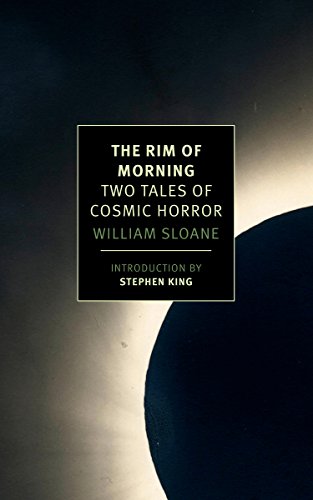
Cosmic horror is a term generally applied to H. P. Lovecraft and his circle. My reading of cosmic horror has been either the Lovecraft circle (Donald Wandrei, Clark Ashton Smith) or those influenced by Lovecraft.
That segues into William Sloane’s To Walk the Night which I finally set time aside to read. I had heard about the book on the old pulp mags Yahoo group. Somehow, I was alerted that New York Review of Books had reprinted two novels by Sloane as a trade paperback omnibus.
To Walk the Night was published as a hardback in 1937. There were paperback reprints in the 50s, 60s, 1980 and in hardback as an omnibus with Sloane’s The Edge of Running Water as The Rim of Morning. Stephen King wrote an introduction. I am not a fan of Stephen King, this is the second introduction I have read by him where he takes digs at H. P. Lovecraft. Stephen– you either like Lovecraft or you don’t, make up your mind.
To Walk the Night is told in first person with a framing sequence of Berkeley Jones bringing the ashes of his best friend Jerry Lister to his father. He stays up all night telling Lister’s father the events of the past two years. The story starts with Jones and Lister driving from NYC to their college alma mater to watch a football game. Lister convinces Jones to stop by and visit Professor LeNormand, an eccentric scientist of astronomy. Their night visit to the observatory finds Professor LeNormand in a chair and burning with an unearthly fire. If LeNormand was alive when they arrived, he wasn’t for long. They call the college president who then calls the local police department in an attempt to keep things discreet. Lister and Jones are interrogated and released. Before they leave the next day, they are introduced to LeNormand’s wife. They are shocked as LeNormand seemed to be the eternal bachelor. Jones describes there is something off about Selena LeNormand.
Jerry Lister returns to Collegeville to attend Professor LeNormand’s funeral. He is smitten with Selena LeNormand and convinces her to move to New York as a change. In short order, Jerry Lister is engaged to Selena LeNormand. Meanwhile, Jones travels to Collegeville to discuss LeNormand’s death with the detective on the case. There is no background to Selena LeNormand that the detective can find. There is also the case of the disappearance of a girl from South Carolina at a gas station a few months earlier. The girl is a complete moron cared for by her aging parents. Selena LeNormand arrives almost out of thin air a few days later and married to Professor LeNormand. A picture of Luella Jamison resembles Selena LeNormand in a way.
Bark Jones’ unease with Selena LeNormand grows through as series of small incidents. His drinking grows out of control, he makes a scene at Jerry Lister’s wedding, and the two best friends grow apart.
A year and a half later, Lister contacts Jones urging him to come out to rural New Mexico where Lister is working on his thesis. Lister had taken up Professor LeNormand’s ideas and worked on the mathematical aspect of LeNormand’s theories of time. There is a somewhat trivial incident of running out of matches while out for a long hike. The two arrive back at the house to find that Selena has a fire started despite the lack of means to start a fire. The revelation causes Lister to go into his study and put a bullet through his head.
There is a disclosure at the end of Bark Jones story to Dr. Lister. Selena makes a sudden appearance and the conclusion is something else. It is cosmic, while some is revealed, much is left to the imagination.
The way I describe To Walk the Night is imagine F. Scott Fitzgerald writing a story that combines elements of H. P. Lovecraft’s “The Thing on the Doorstep” and “The Shadow Out of Time.” The style is totally shorn of any Gothic atmosphere but Sloane slips in clues that are mind-blowing. Lovecraft would have loved the concept. He might not have cared for the writing style. I can’t help but think that Sloane was familiar with Lovecraft. He later edited two science fiction anthologies made up of stories from science fiction pulp magazines.
To Walk the Night was a breath of fresh air. I burned out a long time ago on Lovecraftian pastiches. I have an unfinished article on the interaction of Lovecraft and Robert E. Howard. In one of their letters early on, there is discussion of cosmic horror. Sloane’s novel shows there is a lot of mileage in cosmic horror in right hands.
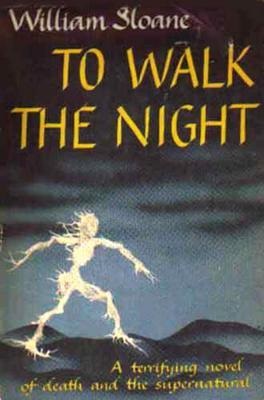
Science Fiction and Fantasy New Releases: 25 November 2023
Saturday , 25, November 2023 Uncategorized Leave a commentEvery week, the Castalia House Blog spotlights some of the many new releases in independent, pulp, and web novel-influenced science fiction and fantasy.
A deadly puzzle. A closing trap.
My name is Nadia, and I’m a Marshal of the High Queen of the Elves.
That means it’s my responsibility to broker a peace deal between the dwarves and the Elven commoners…and there are lots of Elven nobles who would like to see the deal fail.
So when the Lord Inquisitor Arvalaeon arrives on my doorstep, critically wounded and missing the last week of his memory, things have just gotten even more complicated.
One false step and the embers will become an inferno…
A retired Marine. A child born with abilities. Only she can protect him.
In the near future, every new child must be approved and birthed from artificial wombs. This medical miracle is sold as a health benefit to humankind, but the truth is darker…
They’re in place to keep the birth of telepaths hidden and under control.
This truth is no secret to former U.S. Marine Valerie Hara, however. Her illegally born son is a powerful telepath. When government agents storm her home to take him away from her, she’ll stop at nothing to protect her family—including turning her skills as a soldier against the government she once swore to obey.
As she fights to get her son back from those who want to control him, she becomes a spark to ignite a revolution that threatens to spread across the globe.
But will she survive to see a better world?
A call for help
A world where things aren’t what they seem
And an enemy that will stop at nothing to destroy Travis Hurts
There’s always another job to do. Fugitive Recovery Specialist Travis Hurts has no shortage of outlaws and desperados to track down. But when a call for help comes in from Las Brazzas, a world with secrets, he soon finds that he’s in over his head. And there’s nothing he can do but shoot his way out of trouble.
Morgan Black has a score to settle. He’s a paid killer, but the money doesn’t drive him. He’ll kill Travis Hurts and the widow woman on the Purgatory out of sheer revenge. But he has to be careful. Getting close to Travis isn’t easy. The bounty hunter is one of the only people in the galaxy who can recognize The Man In Black. He’ll have to go hard and fast, straight at his target, and that’s a dangerous place for anyone. Read More
Sensor Sweep: Doc Savage Imitators, Steranko, Russell Kirk, Galaxy Quest
Monday , 20, November 2023 Sensor Sweep 1 Comment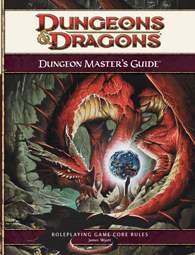
D&D (DM David): While the Dungeons & Dragons team developed the game‘s fourth edition for a 2008 release, they faced problems from several directions. Corporate owners Hasbro brought a big corporate cost structure and return on investment expectations set by Magic the Gathering and Pokémon.
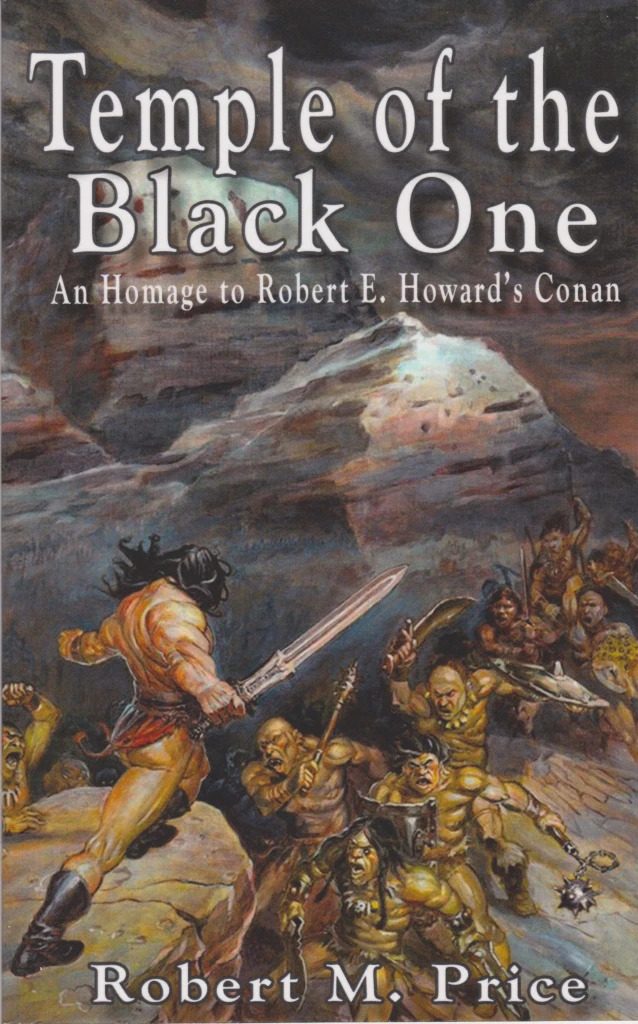
Conan (Sprague de Camp Fan): This “Homage to Robert E. Howard’s Conan” was published in 2017 and dedicated to “the memory of my esteemed friends L. Sprague de Camp and Lin Carter.” Robert M. Price sent Sprague de Camp a synopsis of this story back when TOR Books was publishing new Conan novels.
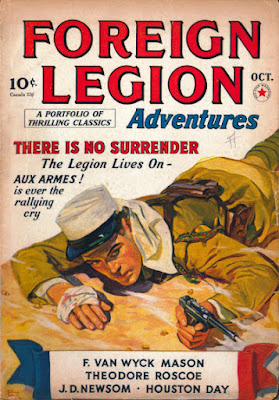
Pulp (Comics Radio): I’ve been reading through a PDF copy of the October 1940 issue of Foreign Legion Adventures, the second and also the last issue of this title, which depended largely on reprints. I’ve already covered a couple of the stories HERE and HERE.
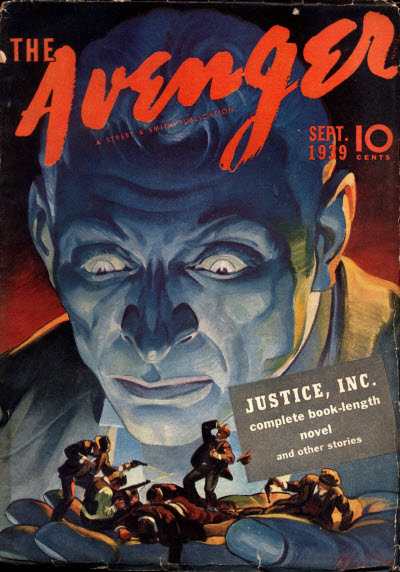
Pulp (Dark Worlds Quarterly): It surprises me greatly that more writers haven’t pastiched the Doc Savage canon. Of those that have tried, success has varied in degrees. It is difficult to create a convincing superman, even in Lester Dent’s day.
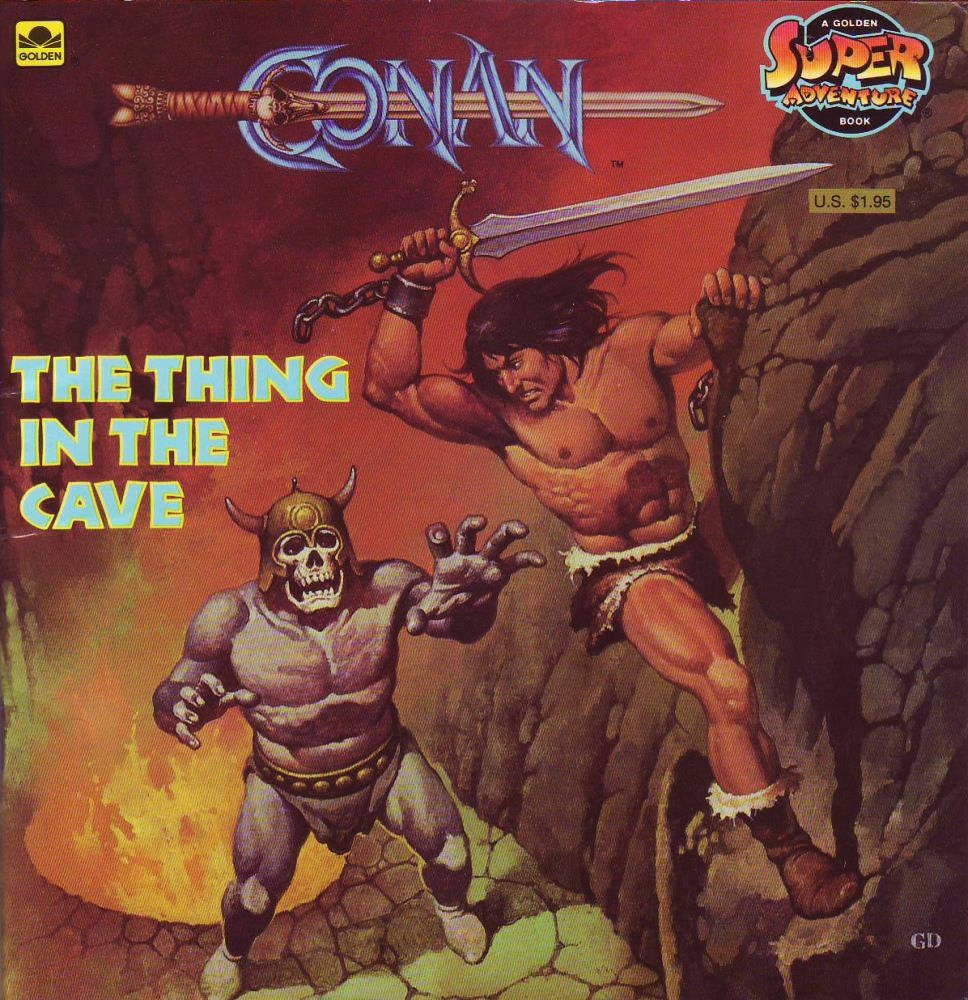
Conan (Paperback Warrior): As a fan of Conan, I stumbled upon the lone Golden Book dedicated to the barbarian hero, The Thing in the Cave. It was originally published in 1986 as part of the Golden Super Adventure line. The book’s cover was painted by the great Gino D’Achille (Fu Manchu, Barsoom, Flashman) while the interior pages were illustrated by the equally great Dan Adkins (Doctor Strange, Eerie, Creepy).
Ghost Stories (First Things): Russell Kirk was haunted by the past. Ghosts prowled his house, peering through windows, moving furniture, startling guests. Far from resenting these presences, Kirk welcomed them. For he regarded society as “a spiritual union of the dead, the living, and those yet unborn.”
Star Trek (Grognardia): Being a Star Trek fan, I was aware of the fact that, sometime during the early stages of the production of 1979’s Star Trek: The Motion Picture, the original 33-inch model of the U.S.S. Enterprise (used in the title sequence of the television show) had become lost. Gene Roddenberry had a sentimental attachment to the model and was keen to get it back, but, despite his best efforts, he was never able to do so. Its disappearance was thus one of big mysteries of Star Trek lore – that is, until the end of last month.

Weapons (Frontier Partisans): While we’re talkin’ tomahawk…Ball and Buck — purveyor of (very) high-end fieldwear and accessories — announced the drop of a collaboration with the legendary Daniel Winkler on a matched camp axe and knife set. The pair will run you $1,100 which is way too many plews for this Frontier Partisan, but some well-heeled booshways might want to outfit themselves thus…

Comic Books (Super Hero Hype): Amid a legion of damsels in distress, Belit stood out as something special. Belit owned her sexuality and was as dangerous as Conan the Barbarian in a fight. Such was her will that she defied death itself to save the man she loved from her fate.
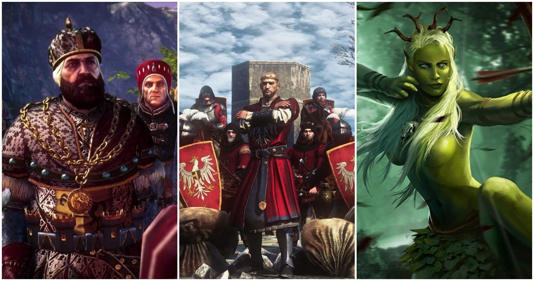
Fantasy (MSN): The world of The Witcher 3: Wild Hunt is complex and certainly involves a lot more happening than a lost godly daughter being chased by weird otherworldly elves. Amid all the terrible happenings within Geralt’s circle of friends and family, a huge continental war is actually raging, making things a lot more difficult for the witcher. With that in mind, it’s important for the players to understand what the political situation is in Geralt’s world.
Tolkien (The One Ring): The Letters of J.R.R. Tolkien, first edited by Humphrey Carpenter with assistance from Christopher Tolkien, is the definitive source of Tolkien’s personal writings. If you have ever seen a quotation cited from “Letter 131” it’s a reference to the numbering of this book. Some call it a biblical bibliography of Tolkien. In this new edition the numbering remains the same, with additional content added in context via a “203a… 203b…” system. Several letters have expanded, with the 8+ page Letter 131 now 40% longer from its originally edited form.
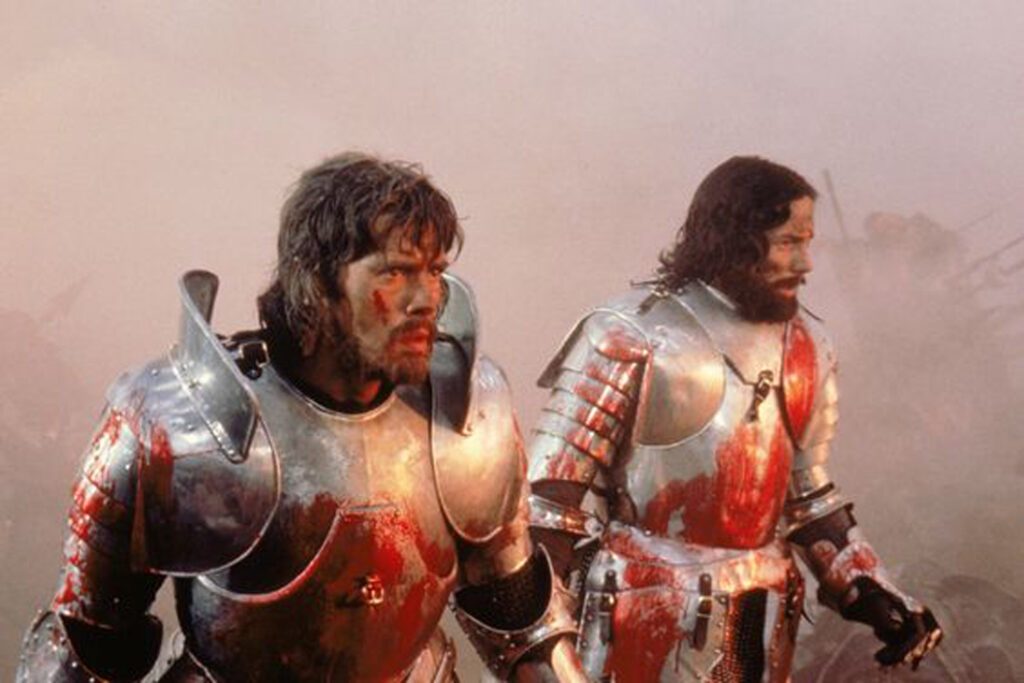
Arthurian (Aureus): One of the most unique qualities of the Faustian West is the hotbed of debate on its true mythology. Few contest the Homeric foundation of Hellenic culture or Atum’s role as the progenitor of the Egyptian soul. The West, however, has from the onset worn a variety of masks that have all been heralded as its true face. The primary dualism at play is “Christian vs pagan,” with both sides having equal claims to validity, at least on the surface.
D&D (Grumpy Wizard): Early editions of Dungeons & Dragons demand teamwork. Most character classes have strengths and abilities that other classes do not possess. The ranger scouts ahead so the party isn’t surprised, the thief checks the door for traps, the fighters absorb and inflict damage, the cleric casts spells that protect and heal, and the wizard shifts the momentum of the battle with a well timed application of magic.
Tolkien (Notion Club Papers): This could be participation with divine creation (this is what I understand to happen in Heaven); or participation with another person’s created work – perhaps someone from the past. This can serve as an illustration – taking the example of JRR Tolkien’s The Lord of the Rings (LotR). Two widely known categories of engagement with life, with works; could be termed ‘projection’ and ‘channeling’ – and I will contrast these with Final Participation.
RPG (Pelgrane Press): Sometimes you want to run an entirely casual tabletop session that requires next to no prep on your part, and zero learning curve for the players. For example, you might want to run a game around a dinner party, maybe with a break in the middle for food. Or the trad game you hoped to run has been scuttled by a last-minute absence, let’s say of the player of a character crucial to last week’s cliffhanger.
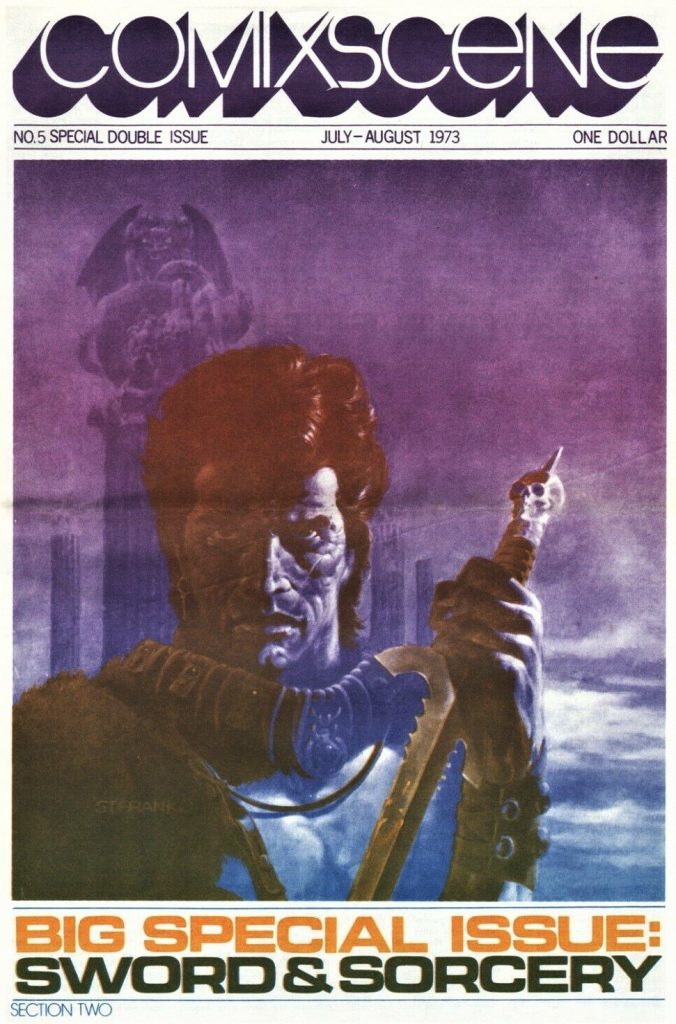
Art (DMR Books): If there’s one man who “can do anything”–at least in the creative fields of graphic art, writing and music–it is Jim Steranko, who turned eighty-five yesterday. Dos Equis truly dropped the ball when they passed on Steranko for their “World’s Most Interesting Man” ad campaign.
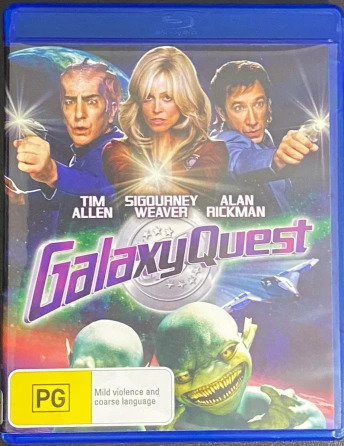
Cinema (Stuff Ian Likes): Galaxy Quest (1999) was written by David Howard and Robert Gordon and directed by Dean Parisot. It features Tim Allen as Nesmith, with Sigourney Weaver and Alan Rickman as two of his disgruntled colleagues, Gwen DeMarco and Alexander Dane. Other cast include Tony Shalhoub, Daryl Mitchell, Enrico Colantoni with Justin Long and Sam Rockwell in breakout roles (and look carefully for Rainn Wilson in his first film credit as well).
D&D (Monsters & Manuals): In my last post, I linked to a Wired article which purports to be about a Ghibli-inspired D&D 5th edition setting, but which is really about the bigger issue of ‘wholesomeness’ and the need which young people nowadays seem to feel for media that is, for want of a better word, ‘nicer’ than what they are used to. There was a time when I would have dismissed this is the whining of softies, and accused youngsters of wanting to be special snowflakes.
Detective Fiction (Moonlight Detective): The Hit List: Top 10 Fascinating World War II Detective Novels. I decided on a World War II theme, which may sound as basic as any other top 10 list, but wanted to put together a list with titles with some historical weight behind them. Not merely titles that take place during the war or use WWII aesthetics as a frame for the period of the story.
Weapons (Shadversity): Leaf blade swords have a rich history, especially during the bronze age, yet they mysteriously disappeared during the medieval era. Follow along as I explore intriguing theories behind their disappearance.
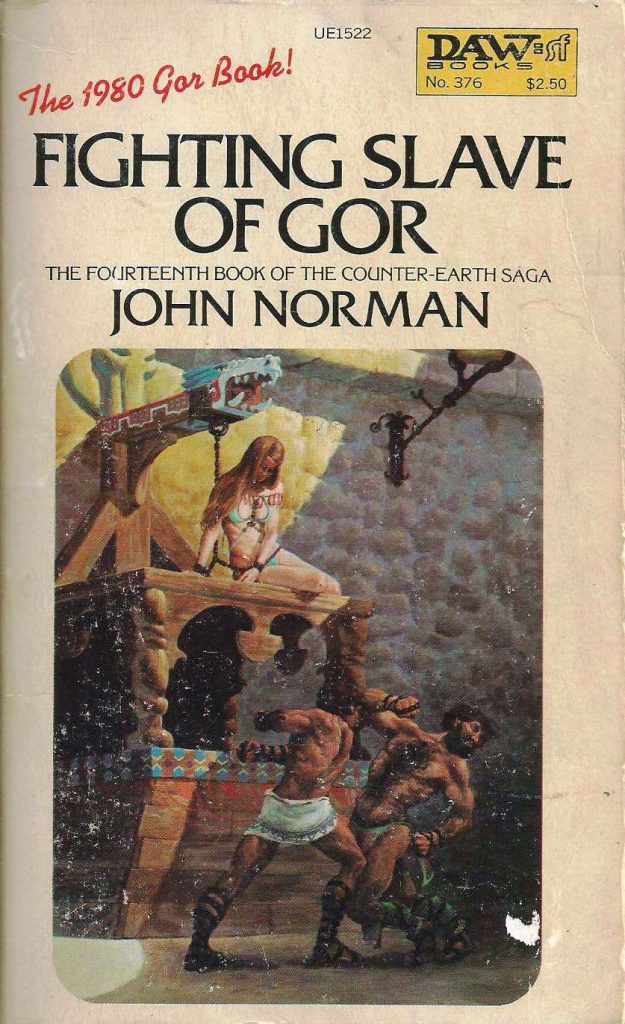
Fiction (Por Por Books): I was in the mood to read something vapid. Thus it was, that recently I reached for ‘Fighting Save of Gor’ (384 pp.), published as DAW Book No. 376 in March, 1980. The cover art is by Richard Hescox. ‘Fighting Slave’ is the fourteenth Gor novel, of a total of 36 (issued as of 2021). This easily is one of the worst ‘Gor’ novels I’ve ever read………..
Weird Tales (Tellers of Weird Tales): Weird Tales began reprinting classic tales of weird fiction in the May issue of 1923. The series is called “Masterpieces of Weird Fiction,” and although the last entry is numbered six, there are actually seven entries. (The miscounting began with entry number five.) Five of the seven are by Edgar Allan Poe. We should remember that the co-founder of the magazine, Jacob C. Henneberger, was a great fan of Poe. Ambrose Bierce and Edward Bulwer-Lytton had one entry each in the series.
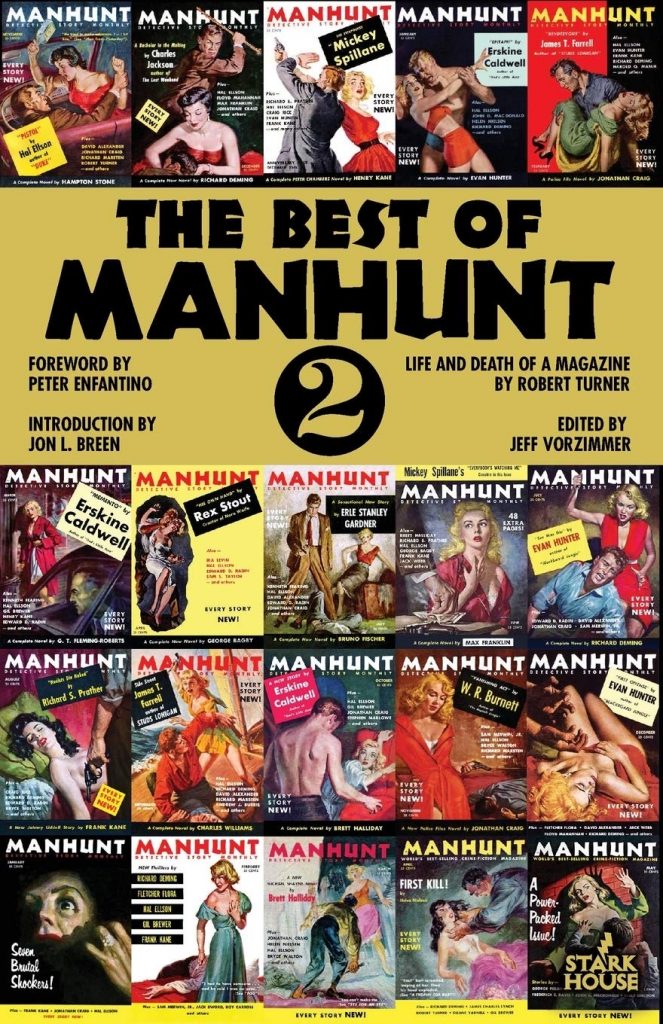
I read The Best of Manhunt 2 the past six or so weeks. Like volume 1, this is in trade paperback format, 223 pages, 35 stories ranging from 3-4 pages to novelettes. Authors include Fletcher Flora, Richard Deming, Helen Nielsen, Frank Kane, Jonathan Craig, Donald Westlake, Jack Ritchie who were to be found in volume 1.
Almost a year ago, I looked at The Manhunt Companion and The Best of Manhunt magazine. I had bought both books and The Best of Manhunt 2 from book dealer Mike Chomko at Pulpfest last year. This past August, I told Mike that I felt like needed a shower after reading The Best of Manhunt. He laughed and used that as a selling point to other potential buyers.
There are more writers who got their start from the pulp era in this book: William R. Cox, William Campbell Gault, Richard Wormser. Their execution is more like 1930s pulp detective with a few more rough edges. Bryce Walton and H. A. DeRosso are both 1950s nihilistic.
There is a story by W. R. Burnett (Little Caesar) that was more on the slick and breezy side. I read Burnett’s historical Captain Lightfoot last year that was also on the breezy side.
There are some newer writers from around 1960: Robert Edmond Alter, Edward D. Hoch, and Charles Broeckman. Alter was the last of the great cross-genre fictioneers. He wrote adventure, crime, spy but his specialty was the sea creature story. I would love for his sea creature stories to collected into book form.
There were more traditional private detective tales in this volume, a little less of normal man giving into temptation and going horribly wrong stories. As I wrote before, there is a underlying current of nihilism with fiction from Manhunt. The writing is good if not great for what it wants to achieve. This is among the most direct prose you are ever going to read. I told a friend and he was wondering why the tone of the fiction when things were supposed to be great in the 1950s. Maybe when things are good, we engage in naval gazing looking for the bad. Organized crime and corrupt politicians are common themes in Manhunt. Pulp detective fiction from the 1930s acknowledges the corruption but the protagonist still fights for what is good. There seems to be an inverse relationship with the hero when things are tough or good. I noticed that with sword & sorcery flourished when things were tough. A genre that the 1950s were not kind to also.
I will be taking a break from 65-70 year old crime fiction. I do have more of Donald Wandrei’s fantastic I. V. Frost stories to read (and imitators) from the 1930s.
Science Fiction and Fantasy New Releases: 18 November 2023
Saturday , 18, November 2023 Uncategorized Leave a commentEvery week, the Castalia House Blog spotlights some of the many new releases in independent, pulp, and web novel-influenced science fiction and fantasy.
A lost weapon. A forgotten enemy. A new alliance will rise.
An old enemy has returned. Militant zealots backed by a new leader who harbors a thirst for revenge. To face them, Reklin, a retired soldier, must enter the Grand Hunt, a brutal contest where people are prey, and rival teams are culled from the best soldiers in the galaxy. On such a mission, not everyone returns.
Ero Bright’Lor, an outcast Krey noble, has a mad plan to form an alliance from the outlaw clans. If he can overcome centuries of enmity, their combined might would threaten the entire fleet of the Krey Empire. But the cause needs a leader.
Fortunately for him, a distant scavenger vessel has discovered the wreck of a drifting starship. Beneath the twisted hull of the derelict, Siena has waited twelve years for rescue. As a youth she was augmented into a living weapon, and her power has only grown in captivity…
When hackers can tap directly into the mind, you can’t trust anyone—even yourself…
It’s understandable to be nervous when your new employer tasks you with investigating the first successful mass shooting in twelve years.
Fortunately, detective-in-training Cowan Soto has a Personal Brain Assistant—a cybernetic implant—that allows him to firewall pesky emotions like worry and guilt and redact memories of bullet-riddled corpses.
Unfortunately, Cowan soon learns it was his suspect’s PBA which allowed a ruthless hacker to puppet her into a shooting rampage.
Aided by a veteran investigator, a brilliant CFO, a nihilistic cybercriminal, and the best waifu madam in Kearny Mesa, Cowan must wade through a gauntlet of homicidal professional gamers, the Russian mafia, and the board of OneWorld to bring this ruthless puppetmaster to justice.
All the while, the brand new detective is concealing the fact that he’s the exact type of criminal OneWorld has hired him to arrest: a loose circuit—a human unbound by behavioral modification protocols.
“Welcome to the moon!”
Neal Gordon screwed up his assignment on Mars and they reassigned him to Antarctica. Now he’s being reassigned some place even worse: Luna City. A crime ridden hellhole with a super-rich ruling class, he almost immediately finds himself targeted by bounty hunters and cyborg terrorists. Thankfully, Neal has an unusual set of partners in robot dog, Barksley, and the snarky but badass Lucy Westenra. Yes, make all the vampire jokes you want.
It’s tough being a corporate cop on humanity’s foremost colony and before this adventure is over, he’s going to have to deal with deranged influencers, mysterious female secret agents, and a 1970s themed flying car called the Purple Rain. Can he survive to get reassigned? Who knows.
Chase had it all planned out, do a little time in one of the emperor’s jails, say a four year stretch for getting rid of some trash that no one would miss, and when he got out, the path to the leadership would be wide open. It wasn’t enough to be one of the gang’s rising stars, or better lieutenants, he needed jail time, serious jail time — not that juvie crap or just going to county, to garner the respect he needed and deserved.
Unfortunately his bastard of a father, the same one that left his mother to die in poverty and him to run wild on the streets took an interest. Seeing him sitting on the bench when his case went to court was a shock. But not as big a shock as being sentenced to ten years in the Imperial Navy.
That’s just the first of Chase’s nasty surprises as he finds himself among the Emperor’s Own – The Wolfhounds. How, and why, his bastard father sent him there is a secret that only the base AI knows the answer to. When that same AI decides to use Chase to fulfill its own orders, Chase soon finds himself in a situation where if he doesn’t die honorably in combat due to the enemy, his own side will arrange those circumstances for him.
Unfortunately for everyone involved, Chase is proving to be just as tough of a bastard as the man who sent him there. Read More
Sensor Sweep: Star Frontiers, Steranko, Asimov, Grey Hawk
Monday , 13, November 2023 Sensor Sweep 1 CommentConan (Education Forensics): If you listen to “Ask Chuck Dixon” on YouTube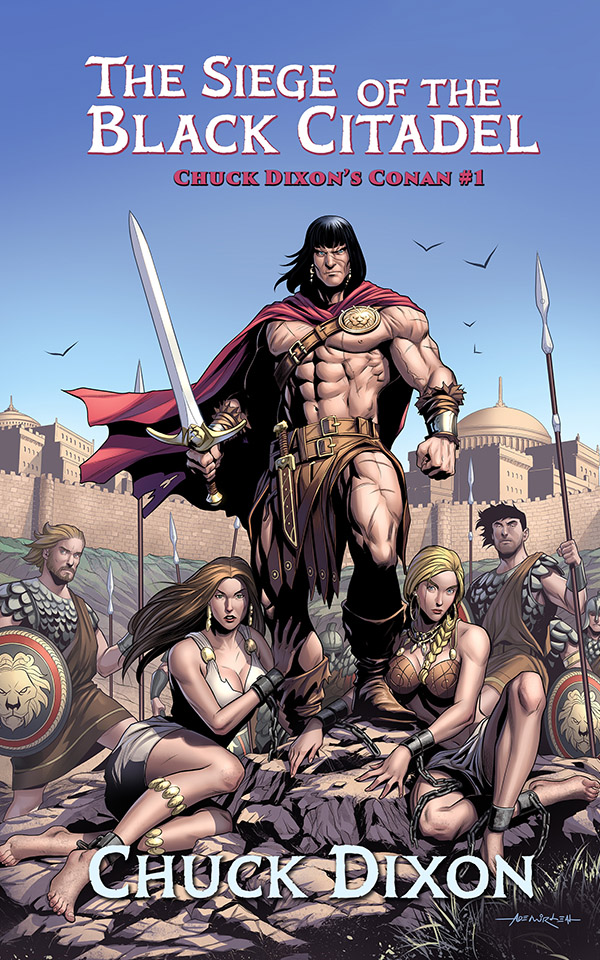 or UATV, you’ll know that Dixon has written thousands of comic books. He created the character Bane, and wrote ‘Batman’ for DC for ten years. He’s also responsible for the Levon Cade series of Vigilante Justice novels.
or UATV, you’ll know that Dixon has written thousands of comic books. He created the character Bane, and wrote ‘Batman’ for DC for ten years. He’s also responsible for the Levon Cade series of Vigilante Justice novels.
One of the things he talks about regarding the difference between writing comics and writing prose is that writing comics is actually more difficult, because the pictures are already there.
 Fiction (Book Graveyard): Lee Grimes was born in Nebraska in 1920 and died in Connecticut in 2009. He wrote three sci-fi books, a children’s book, and these two Chandra Smith books. I found a site called Nebraska Authors that has Lee Grimes pseudonym as Fremont Dodge but I only see one book listed under that name and it’s called Muck Man. The Ax of Atlantis is unfortunately, the second and final entry in the Chandra Smith series. Chandra is an art expert/spy.
Fiction (Book Graveyard): Lee Grimes was born in Nebraska in 1920 and died in Connecticut in 2009. He wrote three sci-fi books, a children’s book, and these two Chandra Smith books. I found a site called Nebraska Authors that has Lee Grimes pseudonym as Fremont Dodge but I only see one book listed under that name and it’s called Muck Man. The Ax of Atlantis is unfortunately, the second and final entry in the Chandra Smith series. Chandra is an art expert/spy.
Fiction ( Ken Lizzi): Gardner F. Fox‘s The Borgia Blade is a distillate of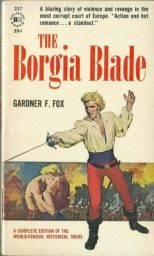 Rafael Sabatini, served with a squeeze of romance novel in a man-sized pewter tankard. Fox streamlines the historical adventure novel, keeping only the good stuff. And yet at the same time one gets the impression that he’s putting all his research on the page. That is usually a criticism, suggesting an overstuffed narrative filled with extraneous minutiae. But not in this case. Borgia Blade is replete with period detail of the sort that delights the student of medieval and renaissance military history. Read More
Rafael Sabatini, served with a squeeze of romance novel in a man-sized pewter tankard. Fox streamlines the historical adventure novel, keeping only the good stuff. And yet at the same time one gets the impression that he’s putting all his research on the page. That is usually a criticism, suggesting an overstuffed narrative filled with extraneous minutiae. But not in this case. Borgia Blade is replete with period detail of the sort that delights the student of medieval and renaissance military history. Read More
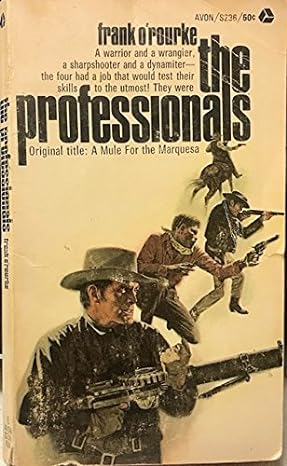 There is a type of adventure story that is an off-shoot of the western set in Mexico in the early 20th Century during the Mexican Civil Wars. Frank O’Rourke’s The Professionals might be the first of those. Originally published as A Mule for the Marquesa in 1964, it was filmed as The Professionals in 1966 starring Lee Marvin, Woody Strode, Burt Lancaster, and Robert Ryan.
There is a type of adventure story that is an off-shoot of the western set in Mexico in the early 20th Century during the Mexican Civil Wars. Frank O’Rourke’s The Professionals might be the first of those. Originally published as A Mule for the Marquesa in 1964, it was filmed as The Professionals in 1966 starring Lee Marvin, Woody Strode, Burt Lancaster, and Robert Ryan.
O’ Rourke (1916-1989) like so many western writers served in WW2 and started writing after the war. He was not really a pulp fictioneer. Most of his short fiction was in slick magazines such as Collier’s, Saturday Evening Post, and Equire. He did have a few stories in Adventure, Blue Book, and the digest Gun Smoke.
Late 1915, wealthy business man Augustus Grant hires soldier of fortune Henry Fardan to rescue his kidnapped wife in Mexico. A Mexican revolutionary, Raza, has gone free lance and holds Grant’s wife. Grant has until January 31s to either pay Raza or else. Read More
Science Fiction and Fantasy New Releases: 11 November 2023
Saturday , 11, November 2023 Uncategorized Leave a commentEvery week, the Castalia House Blog spotlights some of the many new releases in independent, pulp, and web novel-influenced science fiction and fantasy.
The fate of the world is on the line. What will be left After Us?
Safety is obviously only temporary as the Static continues to show itself. With someone trying to open a new set of Rings, the group must separate to vanquish their enemies.
Blaze heads to the South Pole with Anand, to activate the Attractor.
Wyatt must stop Isabel’s father from continuing his destructive patterns, but is he actually working for the good of humanity?
When someone from the past returns, the teams are beckoned to New York where it all began
Deep in the icy terrains of the Russian Arctic, a new mystery unfolds.
A research facility barely a speck on the map hides secrets that could tip the balance of global power. When a distress call reaches Harvey Bennett’s team, they are plunged headfirst into a world of intrigue, betrayal, and life-threatening danger.
Zachary Bennett draws Harvey and his team into the seedy backstreets of Moscow, hoping to find answers as to who has stolen his research.
As they navigate treacherous terrains and unforeseen threats, they stumble upon a conspiracy much bigger than they imagined. Tied to a powerful manufacturing company and pursued by a merciless mercenary group, the team is caught in a whirlwind of treachery and deceit.
But Harvey Bennett isn’t one to back down.
With the cunning and resilience that his fans have come to expect, Bennett delves deeper, trying to unravel the mystery. And when a voice from the past joins the fray, Harvey realizes the challenge is not just about survival—it’s a race against time to prevent a global catastrophe.
Hex Thorn, a hard-bitten veteran of the elite Special Operations Unit of the Dominion Empire, was content with retirement. He’d seen his share of firefights and bloodshed in a bitter war that ripped the galaxy apart.
But when an enigmatic stranger makes him an offer he can’t refuse–a chance to own a legendary Lancer ship–Hex is thrust back into the fray.
His mission?
Hunt down the elusive Dr. Attica Tharand, a person whose secrets could shatter the galaxy’s fragile balance of power.
Hex must reassemble his old Special Ops team, a ragtag crew of soldiers as skilled as they are unpredictable. But they soon find out they aren’t the only ones after the doctor.
With galactic tension on the razor’s edge, Hex will need all his grit, guile, and gunfire to uncover the truth about his target and those who wish him caught. An elite unit. A dark secret. Can they stop interstellar war before it starts? Read More
Sensor Sweep: Sword & Sorcery, John the Balladeer, Le Fanu, Atomic Werewolves
Monday , 6, November 2023 Sensor Sweep Leave a comment Sword & Sorcery (Pulp Super Fan): Robert E. Howard expert Morgan Holmes discusses sword and sorcery stories appearing in Weird Tales. 2023 marks the 100th anniversary of the fantasy and horror-fiction magazine.
Sword & Sorcery (Pulp Super Fan): Robert E. Howard expert Morgan Holmes discusses sword and sorcery stories appearing in Weird Tales. 2023 marks the 100th anniversary of the fantasy and horror-fiction magazine.
RPG (Modiphius): Welcome to another chilling edition of Halloween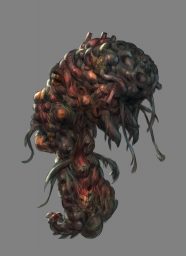 Horrors – are you ready to be terrorised as Achtung! Cthulhu presents its now annual offering of ghosts, ghouls, and things that go bump in the night!? This year we’ve a special treat with five FREE fantastically frightening Halloween Horrors from the devious mind of acclaimed horror writer Bill Heron, all ready to unleash a reign of fantastically frightening Halloween Horrors from the devious mind of acclaimed horror writer Bill Heron, all ready to unleash a reign of terror to your RPG games!
Horrors – are you ready to be terrorised as Achtung! Cthulhu presents its now annual offering of ghosts, ghouls, and things that go bump in the night!? This year we’ve a special treat with five FREE fantastically frightening Halloween Horrors from the devious mind of acclaimed horror writer Bill Heron, all ready to unleash a reign of fantastically frightening Halloween Horrors from the devious mind of acclaimed horror writer Bill Heron, all ready to unleash a reign of terror to your RPG games!
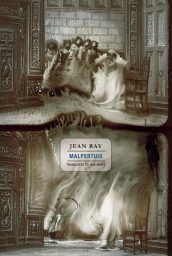 Fiction (DMR Books): Though he wrote over a hundred short stories and numerous comic strip scenarios, Jean Ray wrote only two novels: Malpertuis and The City of Unspeakable Fear. Born Raymundus Johannes de Kremer, Ray was a major of the Belgian School of the Strange. He is considered a Francophone equivalent to Poe or Lovecraft.
Fiction (DMR Books): Though he wrote over a hundred short stories and numerous comic strip scenarios, Jean Ray wrote only two novels: Malpertuis and The City of Unspeakable Fear. Born Raymundus Johannes de Kremer, Ray was a major of the Belgian School of the Strange. He is considered a Francophone equivalent to Poe or Lovecraft.
Horror (Strange at Ecbatan): I also have enjoyed Shirley Jackson’s short fiction, and so have thought for some time that I need to read some of her novels (primarily this one and We Have Always Lived in the Castle, the two that seem best regarded among her ouevre.) And, finally, one of my favorite writers, Elizabeth Hand, just wrote an authorized sequel to The Haunting of Hill House — A Haunting on the Hill. This provided the final spur to to reading Jackson’s novel. Read More
fiction, and so have thought for some time that I need to read some of her novels (primarily this one and We Have Always Lived in the Castle, the two that seem best regarded among her ouevre.) And, finally, one of my favorite writers, Elizabeth Hand, just wrote an authorized sequel to The Haunting of Hill House — A Haunting on the Hill. This provided the final spur to to reading Jackson’s novel. Read More
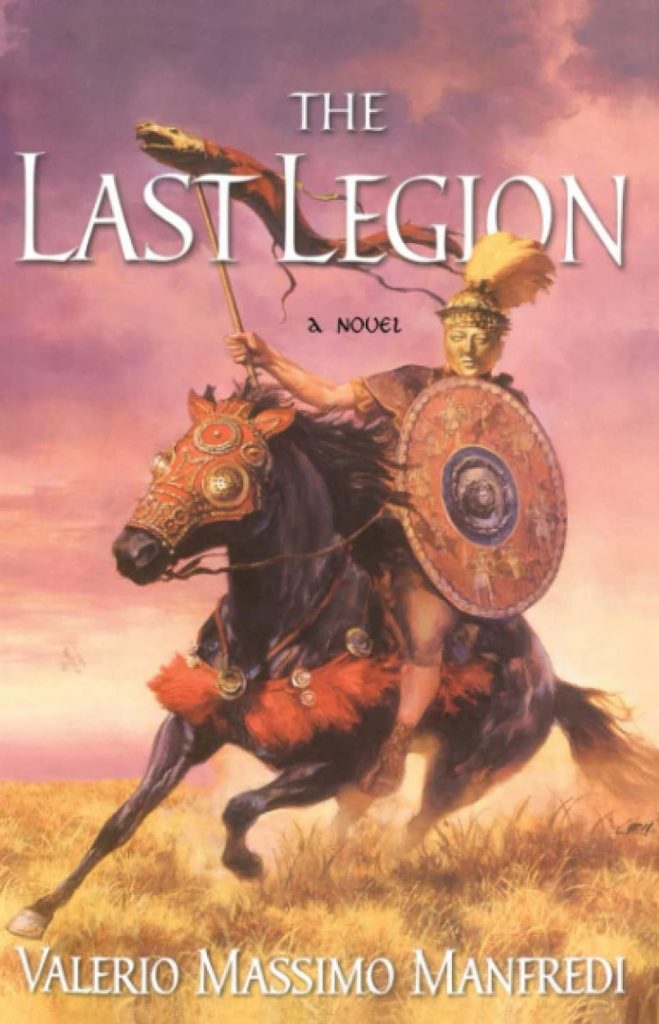 Valerio Massimo Manfredi’s The Last Legion is a stand alone novel from 2002. This is a 425 page novel set in the late 5th Century A.D. The novel starts in late 476 in Italy. Warlord Odoacer makes his move to remove the last Roman emperor, the young Romulus Augustulus.
Valerio Massimo Manfredi’s The Last Legion is a stand alone novel from 2002. This is a 425 page novel set in the late 5th Century A.D. The novel starts in late 476 in Italy. Warlord Odoacer makes his move to remove the last Roman emperor, the young Romulus Augustulus.
Standing in the way is the Nova Invicta Legion. This is a unit made up of Romans, not barbarians, trained and outfitted like an old Roman legion. The Nova Invicta fights against Odoacer’s Germanic barbarians allowing legionary Aurelianus to warn the emperor. Read More
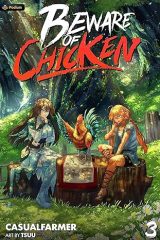 Beware of Chicken #3
Beware of Chicken #3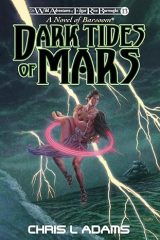 Dark Tides of Mars
Dark Tides of Mars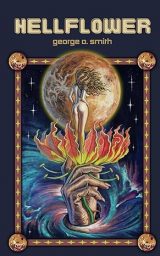 Hellflower
Hellflower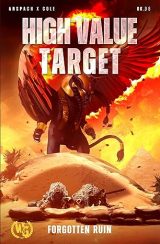 High Value Target
High Value Target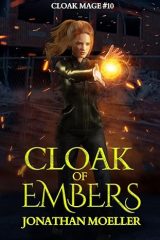 Cloak of Embers
Cloak of Embers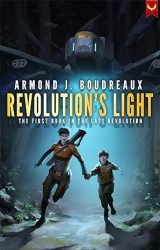 Revolution’s Light
Revolution’s Light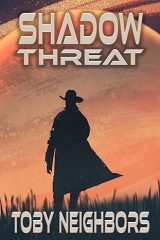 Shadow Threat
Shadow Threat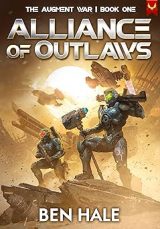 Alliance of Outlaws
Alliance of Outlaws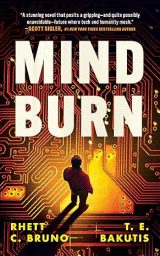 Mind Burn
Mind Burn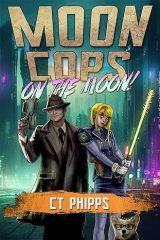 Moon Cops on the Moon
Moon Cops on the Moon Stand Alone
Stand Alone After Us
After Us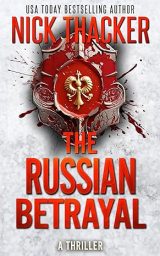 The Russian Betrayal
The Russian Betrayal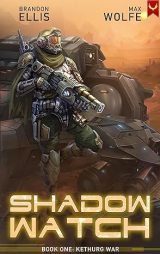 Shadow Watch: Kethurg War
Shadow Watch: Kethurg War